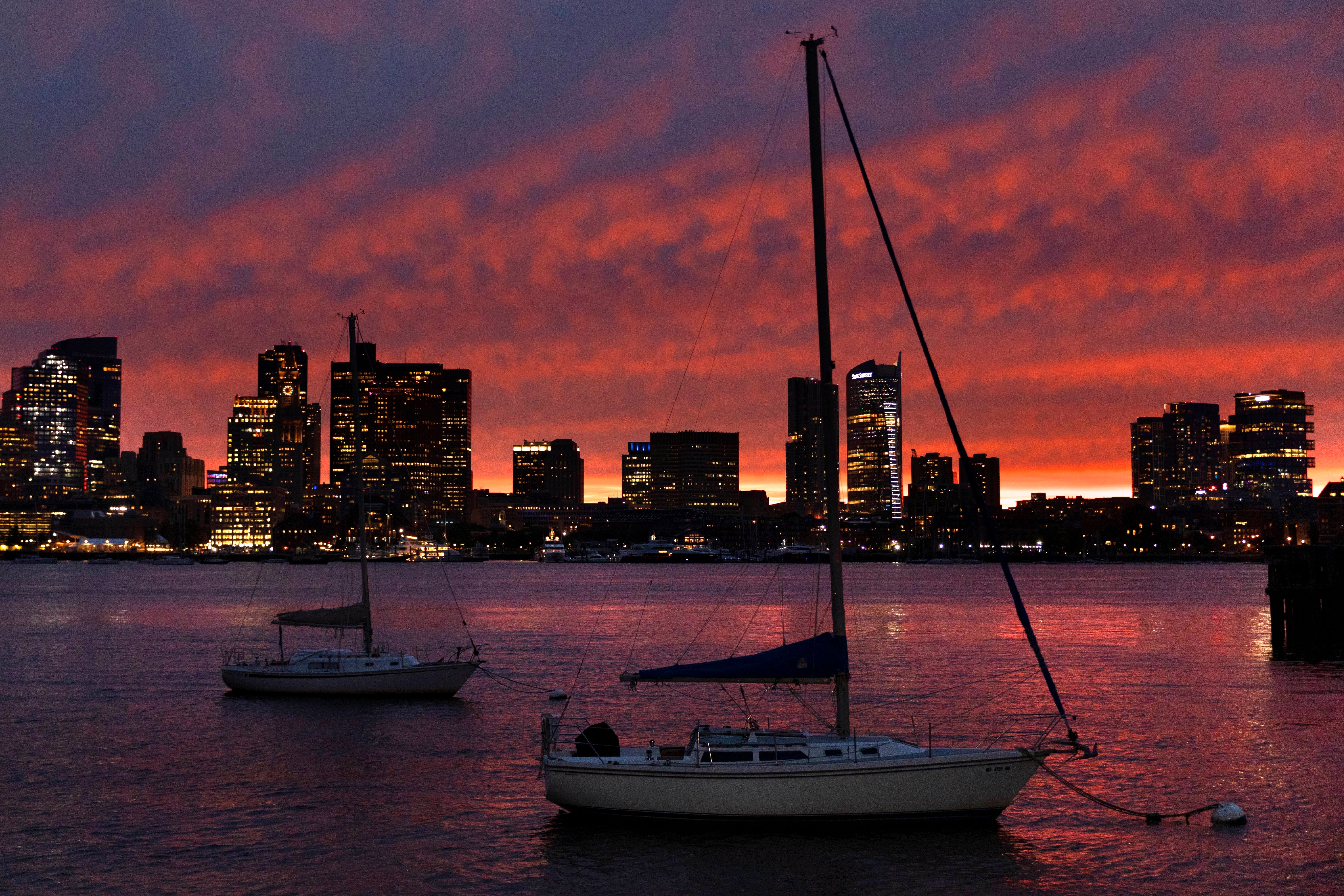Hurricane Lee becomes post-tropical cyclone as millions under storm watches in New England and Canada
Millions of people are under storm watches and warnings as Hurricane Lee churns towards shore, bearing down on New England and eastern Canada with heavy winds, high seas and rain

Your support helps us to tell the story
From reproductive rights to climate change to Big Tech, The Independent is on the ground when the story is developing. Whether it's investigating the financials of Elon Musk's pro-Trump PAC or producing our latest documentary, 'The A Word', which shines a light on the American women fighting for reproductive rights, we know how important it is to parse out the facts from the messaging.
At such a critical moment in US history, we need reporters on the ground. Your donation allows us to keep sending journalists to speak to both sides of the story.
The Independent is trusted by Americans across the entire political spectrum. And unlike many other quality news outlets, we choose not to lock Americans out of our reporting and analysis with paywalls. We believe quality journalism should be available to everyone, paid for by those who can afford it.
Your support makes all the difference.Millions of people were under storm watches and warnings Saturday as Hurricane Lee churned toward shore, bearing down on New England and eastern Canada with heavy winds, high seas and rain.
Cruise ships found refuge at berths in Portland, Maine, while lobstermen in Bar Harbor and elsewhere pulled their costly traps from the water and hauled their boats inland, leaving some harbors looking like ghost towns.
Utility workers from as far away as Tennessee took up positions to repair damage from Lee, which by late Friday night remained a Category 1 hurricane with sustained winds of 80 mph (128 kph).
The storm was forecast to brush the New England coast before making landfall later Saturday in the Canadian province of Nova Scotia, which along with New Brunswick will see the brunt of it. But Lee's effects were expected to be felt over an immense area. The National Hurricane Center predicted hurricane-force winds extending more than 100 miles (161 kilometers) from Lee’s center with lesser but still dangerous tropical storm-force gusts up to 345 miles (555 kilometers) miles outward.
States of emergency were declared for Massachusetts and Maine, the nation's most heavily forested state, where the ground was saturated and trees were weakened by heavy summer rains.
Lee already lashed the US Virgin Islands, the Bahamas and Bermuda before turning northward and heavy swells were likely to cause “life-threatening surf and rip current conditions” in the US and Canada, according to the hurricane center.
Parts of coastal Maine could see waves up to 15 feet (4.5 meters) high crashing down, causing erosion and damage, and the strong gusts will cause power outages, said Louise Fode, a National Weather Service meteorologist in Maine. As much as 5 inches (12 centimeters) of rain was forecast for eastern Maine, where a flash flood watch was in effect.
But even as they hunkered down and prepared, New Englanders seemed unconcerned by the possibility of violent weather.
In Maine, where people are accustomed to damaging winter nor’easters, some brushed aside the coming Lee as something akin to those storms only without the snow.
“There’s going to be huge white rollers coming in on top of 50- to 60-mph winds. It’ll be quite entertaining,” Bar Harbor lobsterman Bruce Young said Friday. Still, he had his boat moved to the local airport, saying it’s better to be safe than sorry.
On Long Island, commercial lobsterman Steve Train finished hauling 200 traps out of the water on Friday. Mr Train, who is also a firefighter, was going to wait out the storm on the island in Casco Bay.
He was not concerned about staying there in the storm. “Not one bit,” he said.
In Canada, Ian Hubbard, a meteorologist for Environment and Climate Change Canada and the Canadian Hurricane Centre, said Lee won’t be anywhere near the severity of the remnants of Hurricane Fiona, which washed houses into the ocean, knocked out power to most of two provinces and swept a woman into the sea a year ago.
But it was still a dangerous storm. Kyle Leavitt, director of the New Brunswick Emergency Management Organization, urged residents to stay home, saying, “Nothing good can come from checking out the big waves and how strong the wind truly is.”
Destructive hurricanes are relatively rare this far to the north. The Great New England Hurricane of 1938 brought gusts as high as 186 mph (300 kph) and sustained winds of 121 mph (195 kph) at Massachusetts’ Blue Hill Observatory. But there have been no storms that powerful in recent years.
The region learned the hard way with Hurricane Irene in 2011 that damage isn’t always confined to the coast. Downgraded to a tropical storm, Irene still caused more than $800m in damage in Vermont.